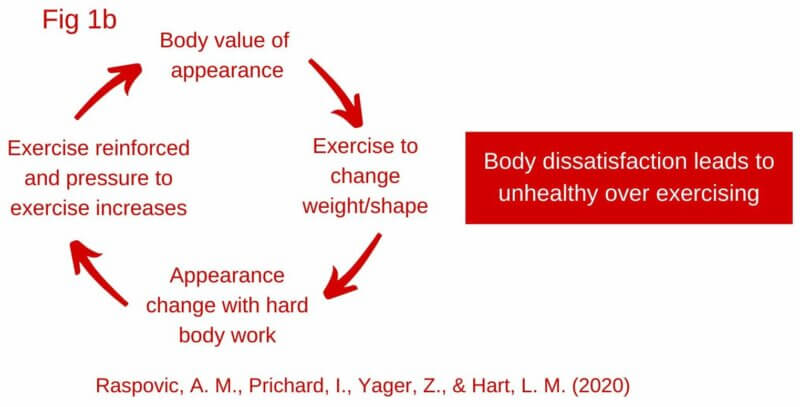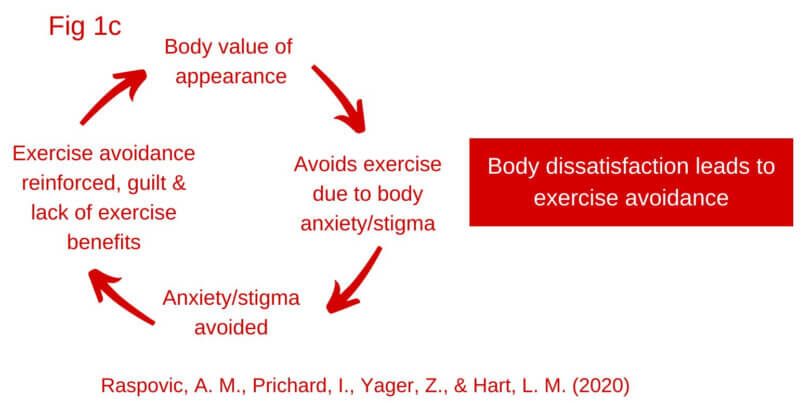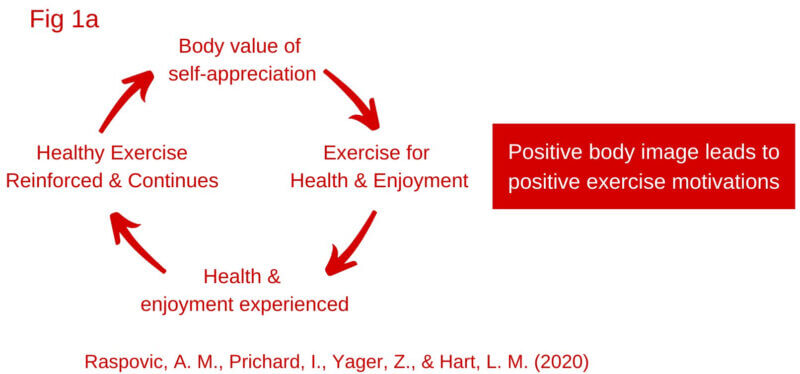How our body image & values influence our Exercise

How our body image & values may be impacting our relationship with exercise
How we think and feel about our bodies, our body image, has a significant influence over why and how we choose to move our bodies. The values we hold around our bodies may have a direct relationship with the way we exercise.
A 2020 Australian study that looked at the body image and exercise relationship in postpartum women from 0-5 years has found that core beliefs around ‘body value’ had either a positive or negative impact on an individual’s exercise patterns. Results supported the notion that body image and exercise formed an intricate and important relationship in early motherhood [Raspovic, Prichard, Yager & Hart, 2020]
Can you see yourself in any of the patterns described below?
The women who valued and appreciated their bodies, for reasons not related to appearance, the goal of exercise was self-care and enjoyment. Alternatively, for those women who valued body appearance, described specifically as the “thin, fit post-baby ideal”, exercise was undertaken for management of weight and shape. These women, whose body image-exercise relationship is depicted in the diagram below exercised primarily to change their weight and shape. The exercise they needed to participate in to do that was usually hard (intense) and frequent (volume). If they achieved the body changes they desired, or at least believed they could, their exercise choice was reinforced and so too was their appearance based body value.

Body values, over exercising and health
The unrealistic societal standards and strict internal expectations meant these women felt a strong amount of pressure to maintain what was described as ‘unworkable amounts and intensity of exercise’. This over exercising pattern often came at a cost to health and relationships including body image distress, exercising whilst injured or too soon after birth.
It is not the sole purpose of your life to be at war with your body – Taryn Brumfitt
Body values and avoiding exercise
The cycle shown below occurred when women with appearance-based body values consequently avoided exercise due to body anxiety, stigma and feeling excluded from traditional exercise environments like gyms. The avoidance of exercise reduced these feelings in the short term but reinforced this avoidance pattern in the long term, resulting in feelings of guilt, shame and the absence of exercise benefits such as stress relief.

Positive body image and appreciation
This final diagram depicts a positive adaptation to exercise. It illustrates a body image-exercise relationship driven by the core body value of appreciation for what the body can do (functionality rather than appearance) where exercise was used for self-care. When these women experienced ‘health’ and enjoyment from exercise, this was in alignment with their body values and so their choices were reinforced. This cycle was found to be typical in women who described features of positive body image, whereas the previous two patterns were typically associated with negative body image.

Do you see yourself in any of the patterns described above?
Whilst everyone deserves the right to bodily autonomy and to choose what type of exercise works best for them, this study does provide a convincing case for working towards a body value of appreciation and shifting the focus from size and appearance to what your body can do or at least will do again in the future with the right steps.
Of course, this is not easy when ‘diet culture’ loves to uphold stigmatising ideas about people’s weight and body size and tells us we should want to live in a smaller body, no matter the cost. The truth is, for most, the process of shrinking our body is not ‘healthful’ at all and near impossible to achieve let alone maintain long-term. In the real world there are many different body shapes, colours and abilities all worthy of respect and equality. It can certainly be difficult to achieve or maintain a positive and resilient body image though when there is a lack of diversity around us and when certain body types are so frequently more celebrated and valued over others.
Developing a positive relationship with exercise
If you would like some further tips for developing a positive relationship with exercise and a more robust body image for both yourself and your children, you can find previous articles I have written on this topic here including some helpful resources.
For guidance around taking the right steps to return safely to exercise, check out the MumSafe™️ Safe Return to Exercise for New Mums program. Whilst it does have ‘new mums’ in the title, women at any stage of motherhood will benefit from the information this resource provides, especially if you feel you received little to no guidance about where to start in those early days.
You can find more resources along with the study discussed in this article on the Body Confident Mums website
Sheridan Wakefield runs My Fit Mumma in Tasmania, . Learn more about Sheridan and Book your Trial today.
You can also find her on Instagram.
